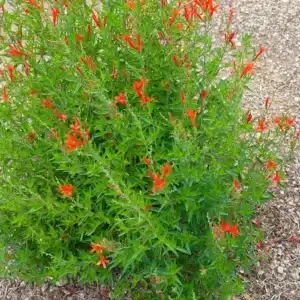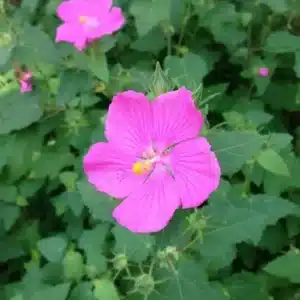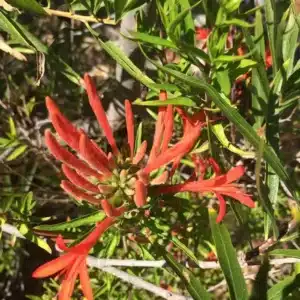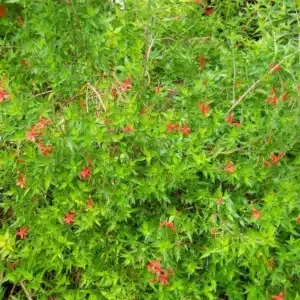Flame Acanthus, Hummingbird Bush, Wright's Desert Honeysuckle, Wright Acanthus, Mexican Flame, Wright's Mexican Flame





‘Hummingbird Bush’ thrives in full sun and well-drained soil. The plant will tolerate partial sun, but flowers best when provided with at least 6 hours of direct sunlight daily. ‘Hummingbird Bush’ will spread and seed itself, but seeds may also be collected from dried capsules in fall. Seeds should be stored in a cool, dry space and planted into moist soil in spring. This plant may also be propagated from softwood cuttings, about 6 inches long. The cuttings should be severed from the plant just below a node, stripped of all but the topmost leaves, and and pressed into a moist growing medium until roots form.
‘Hummingbird Bush’ will thrive in a variety of soil types, as long as excellent drainage is provided. This plant has a very low water requirement, however deep watering every couple of weeks in the heat of summer will result in profuse flowering.
‘Hummingbird Bush’ does not require fertilizer, however, if desired, an application of a 15-30-60 water-soluble fertilizer may be applied in spring, making sure to follow the directions on the product label. The phosphorous may help to promote flowering, although the plant blooms abundantly when provided with full sunlight daily.
‘Hummingbird Bush’ does not require pruning, although cutting the plant back by about a third in late winter will maintain a more attractive form and promote flowering. This plant may be sheared and allowed to form a colorful hedge.
‘Hummingbird Bush’ is not affected by any known pests or diseases.













